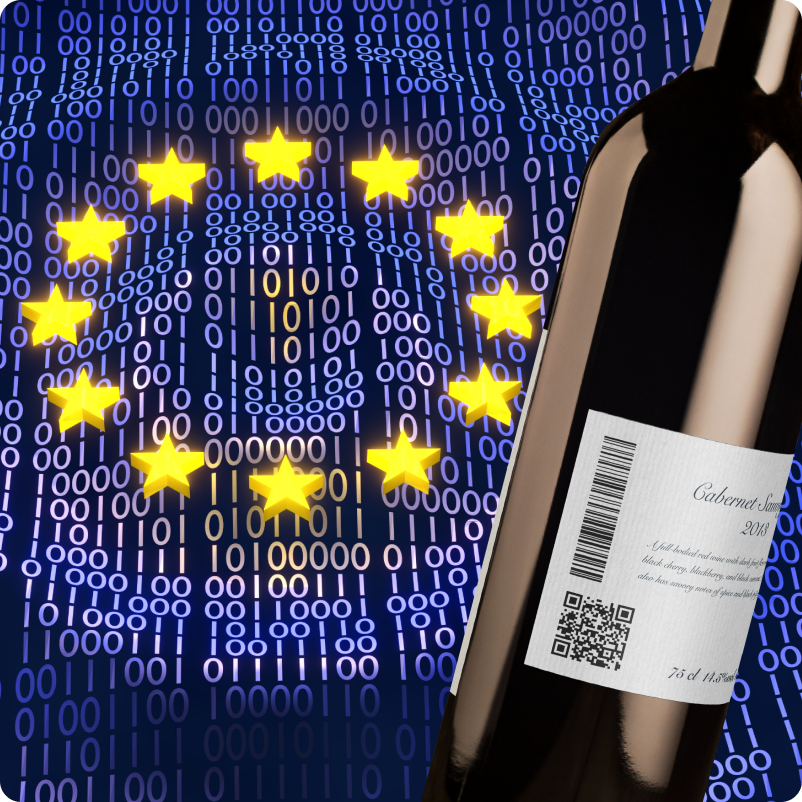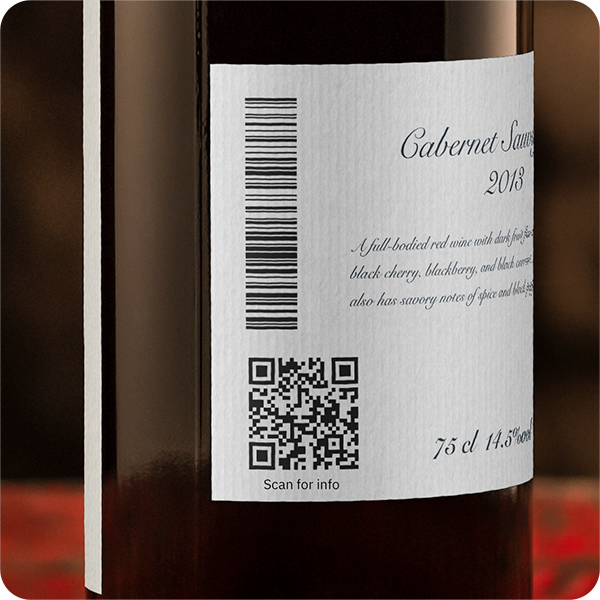De nombreux viticulteurs qui vendent du vin en Europe ont été occupés à préparer leur mise en conformité avec le règlement (UE) 2021/2117 et plusieurs autres règlements relatifs à l’étiquetage du vin. Le changement le plus évident de l’actuel règlement UE 2021/2117 est l’obligation de fournir des informations sur les ingrédients, la nutrition, l’énergie et les allergènes avec les vins vendus dans l’UE à partir du 8 décembre 2023.
Une mise à jour des lois, 2023/3257, a été publiée le 30 mai 2023.
Les changements les plus importants sont les suivants:
- Clarification de l’endroit où les allergènes et les intolérances peuvent être affichés
- Clarifications concernant les additifs qui varient d’une bouteille à l’autre, y compris les gaz d’emballage.
- De nouvelles règles s’appliquent aux vins de moins de 10 % d’alcool et de moins de 0,5 % d’alcool.
- Une série supplémentaire de clarifications a été publiée le 24 novembre 2023.
Vous pouvez lire un résumé de ces clarifications ici à partir des “Questions et réponses sur la mise en œuvre des nouvelles dispositions de l’UE en matière d’étiquetage des vins à la suite de la modification du règlement (UE) n° 1308/2013 du Parlement européen et du Conseil et du règlement délégué (UE) 2019/33 de la Commission”. Lisez la suite pour plus d’informations sur les changements antérieurs et les informations toujours pertinentes du règlement E.U. 2023/3257.
Winemakers frequently use different additives in different batches of the same wine, often late in the process after labels have already been printed and applied.
Considering this, the new regulation takes a sympathetic stance regarding listing of ingredients and additives, a complete list of which can be found in article 48a of Regulation (EU)2019/33. Because it is impractical to track and disclose each and every additive used in each and every bottle of wine, the new regulation requires that the ingredient list for a product include an exhaustive list of additives that could potentially be used in the winemaking process.
Put another way, it’s acceptable from the perspective of the law that additives listed on a label may not be actually present in the wine of that bottle.
Among the sub-category of additives ‘acidity regulators’ and ‘stabilising agents’, requirements are more specific. Regulators and stabilizers need to be listed using the expression “contains… and/or”, followed by no more than three additives. At least one of those additives listed is expected to be present in the final product.
Among the sub-category ‘packaging gases’, such as carbon dioxide, argon, and nitrogen which do not become a part of the product consumed, these may be omitted from the ingredient list if the producer uses either of the following statements:
- ‘Bottled in a protective atmosphere’
- ‘Bottling may happen in a protective atmosphere’
Allergens and intolerances are required to be printed on the product label regardless of whether you are using electronic labels or not. If you’re using an electronic label to disclose nutrition and ingredients, allergens and intolerances must be included there as well.
The original regulation (2019/33) provides guidance on where these compulsory particulars are expected on wine sold in the E.U. The “field of vision” is a simple but important concept in this matter and it is explained in Regulation EU 2019/33 as anything that is legible without the need to turn the package or bottle. This latest regulation states that the following items, while compulsory, can be listed outside the field of vision:
- Substances or products causing allergies or intolerances (referred to in article 9(1), point (c), of regulation (EU) No 1169/2011)
- The indication of the importer;
- The lot number;
- The date of minimum durability;
It’s important to understand that while these are allowed outside the field of vision, they are still required on the label or attached to the wine bottle.
Pour les vins désalcoolisés à moins de 10%, le règlement (UE) 2021/2117 stipule :
- La durabilité minimale du produit doit être indiquée
- Les vins ayant moins d’un demi pour cent d’alcool en volume doivent utiliser le terme “désalcoolisé”
- Les vins titrant plus d’un demi pour cent d’alcool en volume doivent utiliser le terme “partiellement désalcoolisé”.
Le règlement (UE) 2021/2117 ne précisait pas de date d’entrée en vigueur pour les exigences susmentionnées.
Le nouveau règlement finalisé le 30 mai 2023 exige que la déclaration de la durabilité minimale du produit, ou de la date d’expiration, soit obligatoire pour les vins dont le titre alcoométrique volumique est inférieur à 10 % à partir du 8 décembre 2023.
Ce règlement contient des déclarations claires sur les changements apportés aux règles d’appellation d’origine pour les étiquettes des produits vitivinicoles. Par exemple, les vins dérivés du cépage Pedro Ximénez sont autorisés à inclure les vins des régions “Condado de Huelva”, “Málaga”, “Jerez-Xérès-Sherry” et “Montilla-Moriles”. L’objectif de cette modification est expliqué comme étant nécessaire pour clarifier les informations qui se chevauchent et qui sont contradictoires à l’article 5, paragraphe 3, du règlement délégué (UE) 2019/33 et du règlement délégué (UE) 2019/934, en mettant à jour et en modifiant l’article 5, paragraphe 3, du règlement délégué (UE) 2019/33.
En résumé, la principale modification consiste à indiquer que la provenance de l’origine protégée pertinente comprend également le “Condado de Huelva”. Si cette information est particulièrement importante pour les entreprises qui produisent, embouteillent et vendent des vins de liqueur dont l’origine se situe dans les régions mentionnées, il convient de noter que cette information n’est pas particulièrement pertinente pour les établissements vinicoles de toutes les autres régions.
Les viticulteurs auront tout intérêt à poursuivre leurs activités pour mettre leurs étiquettes de vin en conformité avec les nouvelles règles. La nouvelle réglementation entre en vigueur le 8 décembre 2023 et s’applique à tous les vins produits après le 8 décembre 2023. Les vins produits en dehors de l’Europe sont exemptés s’ils ont été importés avant le 8 décembre. Conformément à l’article 90 bis du règlement (UE) n° 1308/2013, le retrait des vins du marché ou d’autres amendes doivent être gérés par les autorités de régulation respectives de chaque État membre.
La mise en conformité peut être un processus simple et sans heurts si vous travaillez avec un fournisseur de solutions logicielles expérimenté qui suit de près la réglementation et qui s’engage à vous aider à la gérer avec succès.

